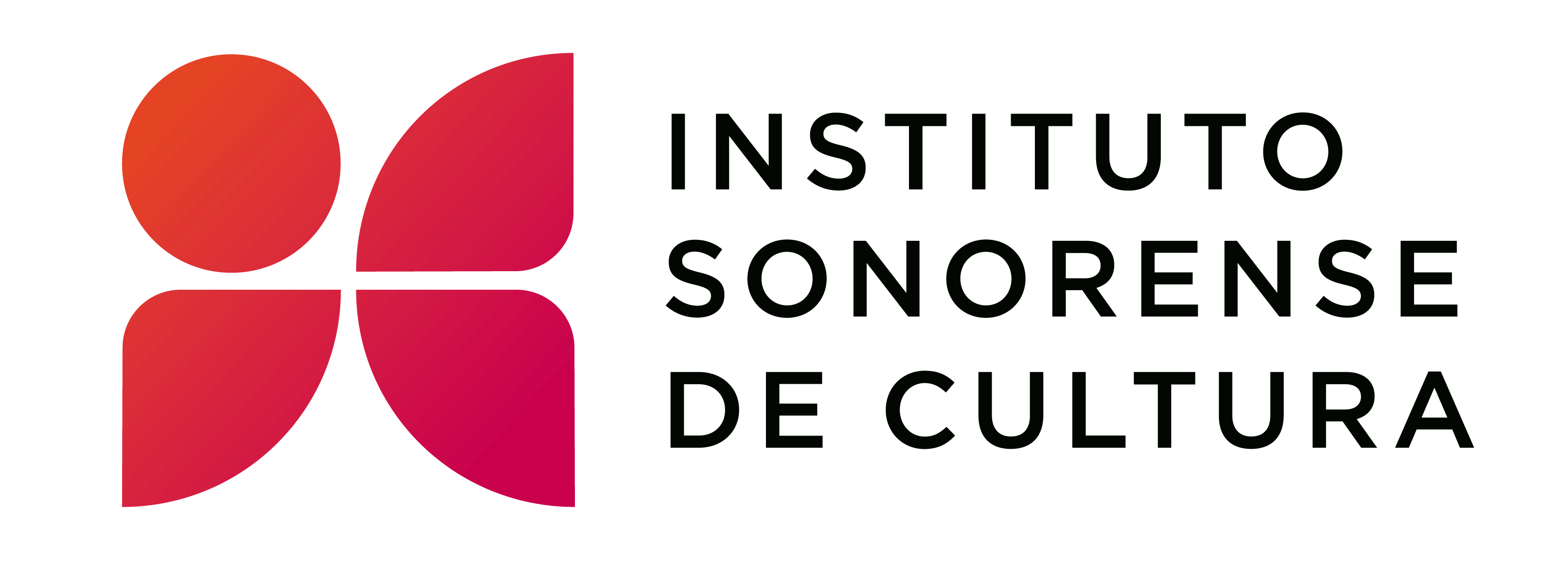
Consulta información sobre el Museo Étnico de los Seris, en español.
Consulta información sobre el Museo Étnico de los Seris, en inglés.
Viento rápido, viento alegre tu que vienes
En la mañana a has que llegue a la orilla del mar…
El Museo étnico de los Seris, se creó en septiembre de 1985. Para el 2014 cambió el nombre a Museo Comca´ac Forma parte de la Red Estatal de Museos del Instituto Sonorense de Cultura, del Gobierno del Estado de Sonora. Su objetivo es la Promoción de la colección de objetos, arqueológicos e históricos, muestra objetos reunidos en su forma de vida artesanía, costumbres, creencias y tradiciones que ayudan a comprender, respetar y valorar la belleza cultural de la etnia. También difunde el patrimonio cultural asumiendo las tareas de investigación, protección y promoción en estrecha colaboración con las comunidades Comca´ac para la preservación e interpretación de su cultura.
Este Museo se ubica en un estado de valoración y salvaguarda del patrimonio cultural, incluye las costumbres, las tradiciones orales como la lengua, música, fiestas, rituales, bailes, danzas, medicina tradicional, las artes y todas las habilidades relacionadas con la cultura Comca´ac.
El Museo constituye un vehículo informativo para toda aquella persona interesada en conocer la cultura de esta etnia sonorense.
Los seris se autonombran Comca´ac (La gente) sociedad étnica sonorense que se sitúan en un enclave natural privilegiado, ubicado frente a la Isla Tiburón y alejados del medio urbano de la ciudad y rodeados por el desierto y el mar donde tradicionalmente han vivido. El amplio conocimiento que tienen sobre los dos ecosistemas les ha permitido sobrevivir como cazadores, recolectores y pescadores. Desde siempre han combinado estas actividades y el intercambio que hacían con otras sociedades y eventualmente los enfrentamientos armados con otros grupos indígenas, después con los españoles y la naciente sociedad sonorense; estas disputas tuvieron mucho que ver con el territorio y el aprovechamiento de los recursos naturales de su región.
Hoy los Comca´ac han aprendido a adaptarse a la vida y los cambios practicando la caza, la pesca y la recolección, pero armonizados con los recursos y exigencias de la modernidad y la globalización. Además es una de las etnias que aún conserva muchas de sus antiguas costumbres y tradiciones. Estos se localizan en dos asentamientos Socaaix (Punta Chueca) y Ahöl Ihom (Desemboque), cabe destacar que los Comca´ac son uno de los grupos minoritarios de nuestro Estado no llegan a superar el millar entre las dos localidades.
Dentro de sus actividades festivo-religiosas resaltan celebraciones como la fiesta de pubertad en las niñas. En ella, la colectividad se entera del tránsito hacia la etapa de juventud de la misma, pues su capacidad reproductora queda de manifiesto. Cuatro lunas después de la fiesta la jovencita puede contraer matrimonio.
Esta también La Fiesta de la caguama siete filos, la cual dentro de sus creencias es considerada como una niña. Se cuenta en la comunidad que desde que inició la cestería, una niña empezó a tejer una canasta, porque ella quería tener dos fiestas; la de pubertad y la relacionada con la canasta grande. Sin embargo antes de finalizarla falleció y reencarnó en la caguama siete filos. Cuando los Comca´ac llegan a pescar una caguama de estas, le hacen una ceremonia o, de lo contario, caerán malos augurios sobre los que la que la pescan, la matan o sus respectivas familias.
La fiesta de la Canasta grande o Saaptim se celebra porque la elaboración de la misma tarda varios años. Debido a la creencia mítica religiosa de los Comca´ac puede presentarse un mal espíritu llamado coen quicöj, el cual aparece al gruñir la aguja, la artesana entonces tiene que entonar cuatro veces un canto para apaciguarlo. Si no lo logra entonces se realiza una ceremonia de cuatro días con sus noches. Después puede continuar con el tejido minuciosamente hasta terminarla y hacer otra conmemoración de cuatro días.
Otra fiesta es la de Hamazaj cmiiqui, la cual se realiza cuando alguna persona transita por el monte por recolección o cacería. Si llegase a encontrar alguna pieza antigua su responsabilidad es hacerle una ceremonia de cuatro días con sus noches para aplacar el espíritu del objeto y evitar la mala suerte, para después regresarla al lugar donde se encontró.
La tortuga verde es muy importante dentro de su cosmovisión y forma de vida ya que cuenta una leyenda narrada por Don Jesús Morales Colosio (1985), bastó un grano de arena, que la tortuga trajo entre sus uñas del fondo del mar, a la superficie y fue suficiente para que existiera la tierra. Destaca también su conocimiento astrológico expresado a través de diversos mitos de la luna y las estrellas en su forma de vida, en sus rutas de navegación, que les ha permitido navegar por el mar, conocen mejor que el hombre blanco las rutas marítimas, saben como y cuando deben salir a pescar, sin exponer sus vidas y que especies capturar. Saben que la primera luna nueva del mes de julio es la que anuncia la aparición de las lluvias y con ello los frutos y animales para cazar y alimentarse, festejando un nuevo año Comca´ac. Este gran conocimiento los ha llevado a la sobrevivencia, transmitiendo el patrimonio cultural de una generación a otra, donde es recreado constantemente con la naturaleza, infundiéndole un sentimiento de identidad y continuidad de su historia contribuyendo a promover el respeto de la diversidad cultural.
Las dos comunidades reúnen características idóneas para albergar una extraordinaria biodiversidad.
Cuentan con nuevas formas de trabajo y organización, participando como Paraecológos, Grupo Tortuguero y Ecólogos del desierto, en el primero estudian las aves, planta y animales mamíferos terrestres, en la segunda, hacen monitoreo para la protección de las tortugas y la tercera trabaja uniendo el conocimiento ancestral y occidental sobre estudios de plantas y animales del desierto. Poseen conocimiento en la medicina tradicional, elaboran cremas, jabones, champo, ungüentos y tés.
on su habilidad e inventiva para elaborar las diversas artesanías como el tallado de palo fierro, piedras y corales, elaboración de collares de conchas y caracoles, toda esta riqueza es una forma de comunicar a los demás su sentido de apreciación y conocimiento a la naturaleza. José Astorga fue el iniciador de la talla de palo fierro donde refleja su conocimiento de los hábitos y movimientos de los animales del mar y el desierto. Su expresión musical cuenta con dos grupos de Rock Hamac caziim (Fuego divino) y Xécoj (Lobo) quienes promueven y difunden sus cantos tradicionales, manifestando sus nuevas formas de expresión, siendo reconocidos internacionalmente, logrando demostrar su riqueza y belleza cultural, como una sociedad sonorense propia y de gran persistencia étnica.
HORARIO DE ATENCIÓN AL PÚBLICO DE MIÉRCOLES A DOMINGO DE 9.00 A 18.00 HORAS
ENTRADA GENERAL $10.00
NIÑOS Y ADULTOS MAYORES $ 5.00
GRUPOS PREVIA RESERVACIÓN PARA VISITA GUIADA
AVENIDA MAR DE CORTÉS S/N TELÉFONO (662) 2-42 06-80
BAHÍA KINO, MUNICIPIO DE HERMOSILLO, SONORA
CORREO ELÉCTRONICO museos@i.s.c. gob.mx
Alejandrina Espinoza Reyna
Responsable del Museo Comca´ac (Seri)
COMITÉ DE CULTURA DEL MUSEO COMCA´AC FORMADO POR INTEGRANTES DE LA COMUNIDAD DE PUNTA CHUECA
Valentina Torres Molina
Oscar Romero Astorga
Elena Flores Ibarra
********************************************************************************************************************
TRADUCCIÓN AL INGLÉS
Alicia y Eduardo Vivanco
Fast wind, happy wind that you come
Make me reach the seashore in the morning…
The Ethnic Museum of the Seris was created in September 1985. In 2014 the name changed to Comca’ac Museum and became part of the Network of State Museums of the Sonoran Institute of Culture, Government of the State of Sonora.
Its objective is to promote their collection of archaeological and historical objects, displaying items gathered, demonstrating their way of life through crafts, customs, beliefs and traditions, which help us understand, respect and value the cultural beauty of this ethnic group.
It also spreads their cultural heritage by taking on the tasks of research, protection, preservation, interpretation and promotion of their culture in close collaboration with the Comca’ac communities.
This Museum is of great value as a safeguard of their cultural heritage, including their customs, oral traditions such as language and music, events, rituals, dances, medicine traditional arts and all skills related to Comca’ac culture.
The Museum is an informative vehicle for all those interested in knowing the culture of this Sonoran ethnic group.
The Seris call themselves Comca’ac (the people), a Sonoran ethnic society that is located in a privileged natural enclave, located in front of Isla Tiburón and far away from the urban environment of the city, surrounded by the desert and the sea where they have traditionally lived.
Their extensive knowledge of the two ecosystems has allowed them to survive as hunters/gatherers and fishermen; they have always combined these activities with trading they did with other societies; eventually armed clashes with other indigenous groups, the Spanish conquerors and the growing sonoran society; had a lot to do with their territory and the use of the natural resources of their region.
Today’s Comca’ac have learned to adapt to life and changes in practicing hunting, fishing and gathering, harmonizing with the resources and demands of modern times and globalization. It is one of the ethnic groups that still retains many of its ancient customs and traditions.
The Comca’ac are located in two settlements, Socaaix (Punta Chueca) located approximately 25 kilometers from the town of Bahia de Kino and Ahöl Ihom (El Desemboque) located approximately 100 kilometers north of Socaaix, between Puerto Libertad and Bahia de Kino, it should be noted that the Comca’ac are one of the smallest ethnic groups of our state and do not surpass a thousand between the two communities.
Among its festive religious activities certain celebrations stand out like the puberty party for girls. In it, the entire community observes and celebrates the youths milestone and right of passage, as her reproductive capacity is evident. Four moons after the party the girl can get married.
There is also the Feast of the Seven-edged Loggerhead, which as they believe is a girl. It has been told in the community since basketry started, that a girl started to weave a basket, because she wanted to have two parties; the puberty one and the big basket celebration. However, before finishing it, she died and reincarnated in the Seven Edged Loggerhead. When the Comca’ac are fishing and catch a loggerhead they do a ceremony, if they don’t bad omens will fall on those who catch it, they or their respective families will die.
The festival of the Big Basket or Saaptim is celebrated because the process of making the basket takes several years. Due to the mythical religious beliefs of the Comca’ac a bad spirit called coen quicöj may present itself, which appears when the needle growls, the artisan then has to sing a song four times to pacify the bad spirit, If they do not get pasifide then a four-day and night ceremony is held, then they can continue with the weaving until it is finished and have another four-day celebration.
Another celebration is Hamazaj cmiiqui, which takes place when someone is in the mountains gathering or hunting. If they picked an old artifact it is their responsibility to have a four-day and night ceremony to appease the spirit of the object and avoid bad luck, and then return it to the place where it was found.
The green turtle is very important within their cosmic vision and form of life, the legend as narrated by Don Jesús Morales Colosio (1985) says that a turtle brought a grain of sand between his nails from the bottom of the sea to the surface and it was sufficient for land to be. It also highlights his astrological knowledge expressed through various myths about the moon and the stars in their way of life and their navigation routes, which has allowed them to navigate the sea, better than the white man, they know how and when to go fishing and what species to capture without endangering their lives.
They know that the first new moon of the month of July announces the rains and with it the fruits and animals to hunt and feed, celebrating the Comca’ac new year. This great knowledge has led them to survival, transmitting the cultural heritage from generation to generation, where it is constantly recreated with nature, infusing them with a sense of identity and continuity of their history contributing to promote respect for cultural diversity.
The two communities have the ideal characteristics to house an extraordinary biodiversity.
They have new ways of working and organizing, such as Biologists, Tortuguero Group and Desert Ecologists, in the first they study plants and animals, in the second, they do monitoring for the protection of turtles and the third works by uniting the ancestral and western knowledge about studies of plants and animals of the desert. They have knowledge in traditional medicine, they make creams, soaps, shampoos, ointments and teas.
With their skill and inventiveness to create diverse crafts such as ironwood carving, stones and coral, elaboration of shell and snail necklaces, all this wealth is a way of communicating to others their sense of appreciation and knowledge to nature. José Astorga was the initiator of the carving of ironwood where it reflects his knowledge of habits and movements of the animals of the sea and the desert.
Their music is currently expressed through two Rock groups; Hamac caziim (Divine Fire) and Xécoj (Wolf), who promotes and spreads their traditional songs through their new form of expression. They have been recognized internationally which has allowed them to successfully exhibit their rich cultural beauty through ethnic perseverance as a great Sonoran society.



